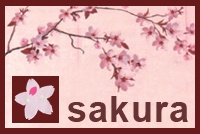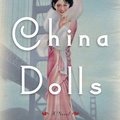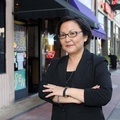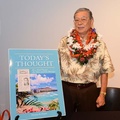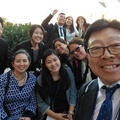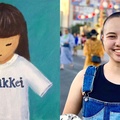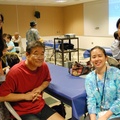The cherry blossom, known as sakura, is the national flower of Japan. Different from the fruit-bearing trees found in other countries, these flowering trees are enjoyed mostly for their beautiful blossoms and the beauty of the falling snow-like petals. Because the blossoms only last for a few days in the spring, many travel to common viewing sites where a festive atmosphere is enjoyed by all; friends and families gather, bringing picnic baskets and sake to be shared with music and song.
Hanami, or cherry blossom viewings, began in ancient times when aristocrats wrote poetry, sang songs, and held picnics under the flowering trees to celebrate Spring’s arrival. According to ancient cultural belief, because these beautiful blossoms are short-lived, falling to the ground and quickly disappearing, they symbolize the nature of life itself—short and transitory. The Japanese also appreciate the purity and simplicity evoked by these blossoms, inspiring countless literary works, dances, and paintings.
When the Issei arrived in the United States, they continued the Hanami tradition wherever cherry blossoms grew, including such places as Central California and the area now known as Silicon Valley (aka, San Jose, CA).
In Japan, the blooming season actually spans several weeks, moving from South to North. However, one need not travel to Japan to be a part of these annual flower viewings. The renowned National Cherry Blossom Festival is held every year in Washington D.C. to commemorate the gift of 3,000 cherry trees from Mayor Yukio Ozaki of Tokyo in 1912. The trees were sent to celebrate the special friendship between the people of Japan and the United States and to allow Americans to partake in the beautiful springtime ritual so cherished in Japan. Other cherry blossom festivals are held in Georgia, Alabama, Michigan, California, and New York.
In Los Angeles, forty-two cherry blossom trees were planted in Little Tokyo August 2001 by community institutions and groups in partnership with the City of Los Angeles. The 2001 Cherry Tree Project trees were initially cared for by members of the community for the first two years. The City has since taken over the maintenance. The trees now bloom each spring.
Cherry blossoms have even been the subject of songs and poems and frequently appear on kimonos and lacquerware. Its blossoms are also preserved in salt and floated in hot water to make a refreshing beverage called akura-yu.
In the spirit of the cherry blossom season, the Japanese American National Museum Store is offering a number of items featuring the sakura—flowered jewelry, sakura mochi erasers, and a CD featuring songs about cherry blossoms. Join us in celebrating the arrival of spring!
* This article was originally published on the Japanese American National Museum Store Online.
© 2007 Japanese American National Museum



